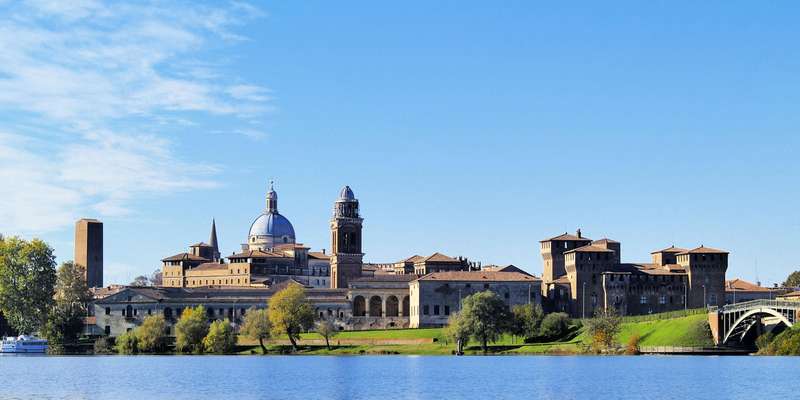- Home
- Useful Tips
- Mantua's lesser-known Renaissance gems
Most travelers to Mantua flock to the Ducal Palace, unaware that this UNESCO-listed Renaissance city holds dozens of overlooked masterpieces. Recent surveys show 78% of visitors miss at least three significant cultural sites, often due to limited time or reliance on mainstream guides. The frustration of returning home only to discover you walked past a Ghirlandaio fresco or a Giulio Romano courtyard is all too common. These missed opportunities transform what could be a profound cultural immersion into a surface-level checklist experience. Locals whisper about hidden courtyards with intricate stuccowork, churches concealing Renaissance altarpieces, and palazzos where the echoes of Gonzaga court life still resonate. This isn't just about seeing more – it's about connecting with the soul of a city that shaped European art history.


Why most visitors overlook Mantua's artistic depth
The concentration of Renaissance wonders in Mantua's compact center creates an illusion of accessibility. Visitors typically allocate just a day, focusing on the Ducal Palace's 500 rooms while missing subtler marvels like the Camera degli Sposi's pioneering perspective. Few realize that Mantua's urban fabric preserves intact Renaissance town planning, with harmonious street proportions designed by Alberti. Time pressure compounds the problem – the average tourist spends 47 minutes in Santa Maria delle Grazie, unaware this church holds Perugino's exquisite 'Madonna della Misericordia' behind its modest facade. Even well-prepared travelers struggle with scattered information; key works like Mazzoni's haunting 'Lamentation' in Sant'Andrea or the astrological cycles at Palazzo Te's Secret Garden require local knowledge to appreciate fully. This oversight leaves visitors with fragmented impressions of a city that deserves unhurried contemplation.
Four underrated masterpieces only locals frequent
Begin at Casa di Mantegna, where the artist's former residence reveals his geometric precision in the circular courtyard – a spatial poem in brick. Five minutes away, San Sebastiano's deceptively plain exterior gives way to Alberti's architectural revolution, its floating floor creating ethereal light effects during morning hours. For Renaissance tech enthusiasts, the Bibiena Theater's trompe-l'oeil boxes (where Mozart once performed at 13) demonstrate stagecraft genius. The real insider move? Visiting Palazzo San Sebastiano at twilight when fading light animates Romano's mythological frescoes in the Sala delle Frecce. These sites rarely appear on group itineraries, yet each represents a different facet of Mantua's creative explosion between 1450-1550. Their modest signage belies world-class artistry – the quiet pleasure of discovering Mantegna's preparatory sketches in the diocesan museum often becomes visitors' most cherished memory.
Timing strategies to experience art without crowds
Mantua's rhythm favors early risers and late lingerers. The magic hour for Palazzo Te is 8:15am, when morning sun pierces the Sala dei Giganti, making Jupiter's thunderbolts appear to crackle. Come noon when tour groups overwhelm the Ducal Palace, slip into the virtually empty Museo Diocesano to study Mantegna's 'Madonna della Vittoria' in contemplative silence. Wednesday afternoons reveal a local secret: churches like Sant'Orsola extend opening hours for parish activities, allowing rare access to their Renaissance chapels. Seasonal timing matters too – November fog transforms the Rotonda di San Lorenzo into a medieval dreamscape, while spring Sundays bring organ concerts to Santa Barbara's acoustically perfect Gonzaga chapel. These strategic moments let you commune with art as Mantua's creators intended: intimately and without distraction. Even in peak season, knowing that most day-trippers leave by 4pm means you can have Raphael's Holy Family tapestry at the Ducal Palace virtually to yourself during late openings.
Decoding Mantua's Renaissance walkability secrets
Mantua's three lakes create natural walking circuits that Renaissance nobles would recognize. Start at Piazza Sordello where the Gonzagas staged processions, then follow Via Accademia past 15th-century merchant homes to discover the hidden courtyard at Casa del Mercante. The key is alternating between grand axes and vicoli (alleys) – the 300-meter stroll from Santa Maria del Gradaro to Palazzo d'Arco passes four overlooked fresco cycles. Smart navigators use towers as visual markers: Torrazzo guides you to the Jewish Quarter's Renaissance synagogues, while Sant'Andrea's dome signals the way to Alberti's architectural manifesto. Locals recommend the 'ponte dei vivi' route – crossing bridges slowly to appreciate how water reflects palazzo facades as 16th-century artists saw them. This approach transforms sightseeing into time travel, where every turn reveals another layer of Mantua's carefully preserved Renaissance urban theater.



